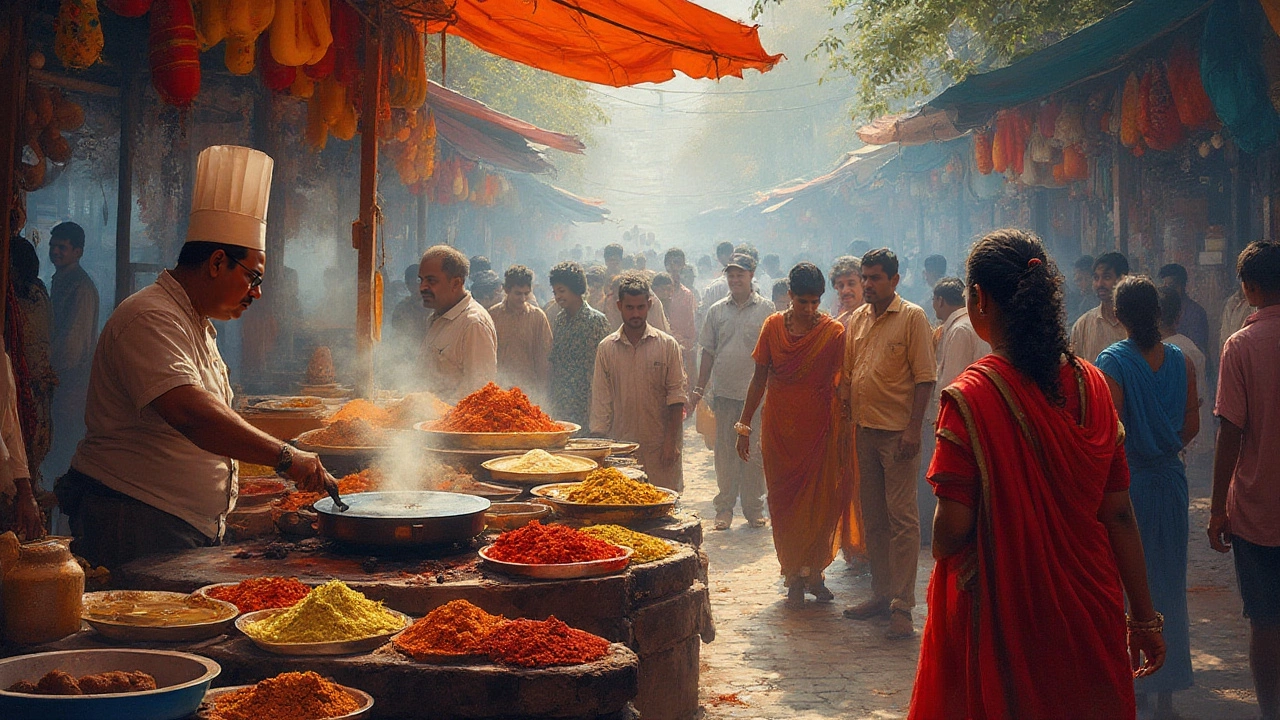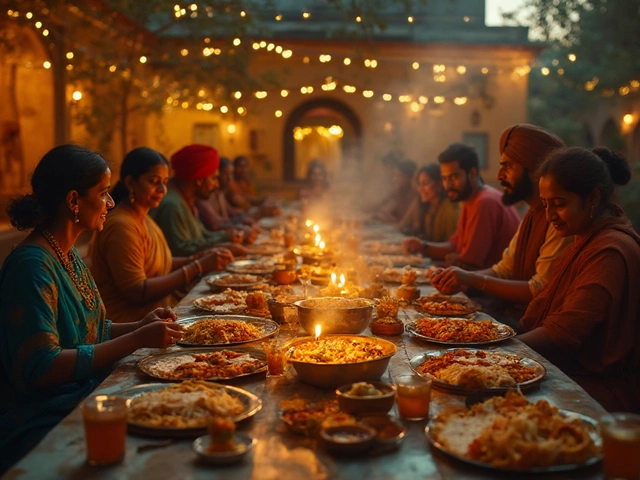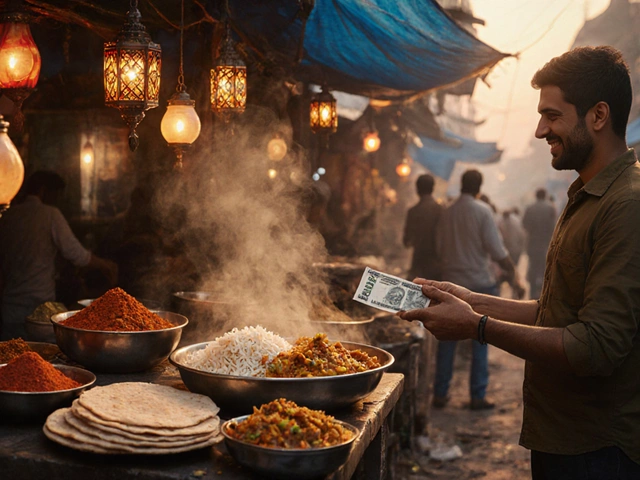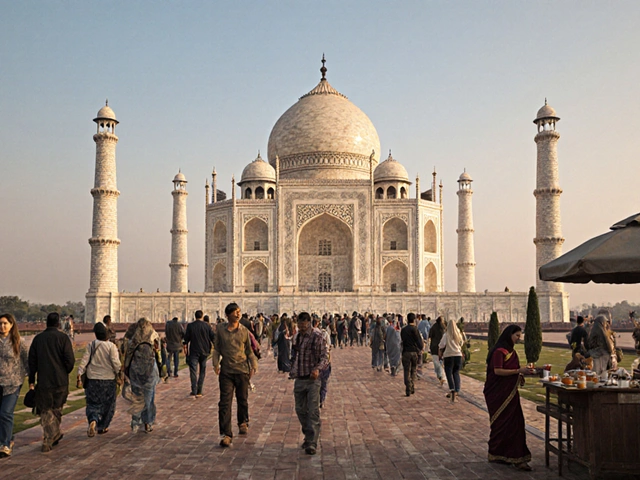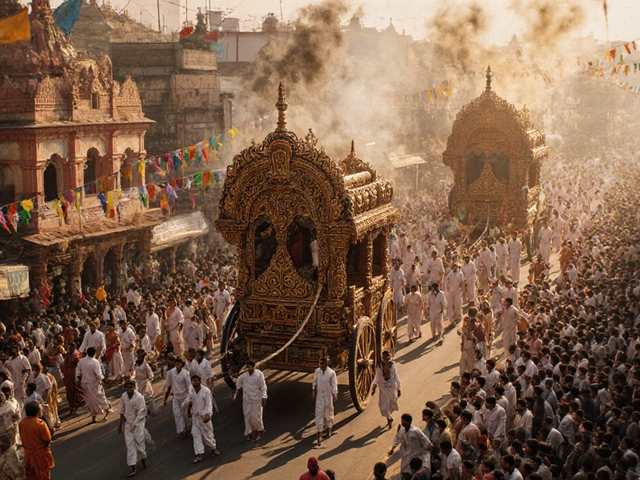Diving into the world of Indian cuisine promises a flavorful adventure. India, with its vast geography and diverse cultures, offers a range of culinary experiences that vary from region to region. One of the most fascinating comparisons lies between the food traditions of South and North India. While both regions use spices and flavors, they have unique cooking techniques and signature dishes that define their culinary landscapes.
South Indian cuisine is known for its use of rice, lentils, and coconut, creating dishes that boast a slightly tangy flavor profile. North Indian cuisine, on the other hand, embraces a rich, creamy texture with its sauces and the use of wheat-based bread like naan and roti. Both regional cuisines have an array of dishes to be savored, whether you prefer the smooth Kormas and Kebabs of the North or enjoy the tangy Rasams and crisp Dosas of the South. This exploration will prepare you for a gastronomic journey across the vibrant culinary scenes of India.
- Understanding the Basics: South vs North
- Signature Dishes of South Indian Cuisine
- Iconic Flavors of North Indian Cuisine
- Culinary Techniques and Ingredients
- Tips for Experiencing Indian Culinary Delights
Understanding the Basics: South vs North
The culinary diversity in India is vast, with each region offering its unique flavors and traditions. The differences between South Indian food and North Indian cuisine are not just about geography; they reflect cultural, historical, and even climatic variations. While North India has cold winters and hot summers, South India enjoys a more tropical climate, influencing the regional ingredients and preparation methods.
In North India, the food is generally heavier and richer, thanks to the liberal use of dairy products like ghee, cream, and paneer that add a luscious texture to dishes. Dishes such as butter chicken, rogan josh, and a variety of rich curries are staples here, often accompanied by wheat-based breads like naan or roti. The use of the tandoor, a clay oven used for baking and grilling, is a distinctive technique that originated in this part of India.
Switching to South Indian cuisine, rice is the staple food, often prepared in a myriad of ways—from fluffy steamed rice to fermented rice-lentil combinations like dosa and idli. Coconut and curry leaves are prevalent, offering a lighter, tangier taste to the dishes. Coconut milk often replaces ghee and cream, giving curries a distinct coastal feel. It’s said, "If there's one place on Earth where food is a celebration, it's Southern India," emphasizing the importance of meals in this vibrant culture.
While spices are central to both cuisines, their roles differ considerably. North Indian dishes typically include a masala blend that focuses on the earthy tones of cumin, coriander, and garam masala, creating a warm and aromatic experience. By contrast, South Indian recipes frequently use a combination of mustard seeds, tamarind, and asafetida, which contribute to their unique herbal and tangy profiles. It’s a truth well acknowledged that despite using similar ingredients, these two regions manage to yield completely distinct dishes.
Visitors embarking on a culinary journey through India should be prepared for this fascinating diversity. From the robust flavors of the north to the zesty vibrance of the south, each meal is an opportunity to dive into the rich history and culture that defines Indian cuisine. So, whether you're savoring a plate of biryani in Hyderabad or enjoying the delicate balance of spices in a Delhi curry, remember that every bite is a reflection of a region's unique story.
Signature Dishes of South Indian Cuisine
South Indian cuisine is a delightful culinary journey, driven by its vibrant array of flavors and ingredients. One cannot mention South Indian food without thinking of the universally loved Dosa. This fermented crepe made from rice batter and black lentils is crispy on the outside and soft inside, offering a wholesome gastronomic experience. Served with an array of chutneys and the classic sambar, a lentil-based vegetable stew, Dosa is a staple that's widely appreciated for its simplicity and taste.
Another beloved dish is the Idli, which, much like its cousin Dosa, is made from fermented rice and lentil batter. These soft, fluffy steamed cakes are often accompanied by sambar and coconut chutney, providing a nutritious start to the day. Their delicate texture makes them a perfect comfort food, and a go-to breakfast or snack across South Indian homes. If you ask a local how best to enjoy an idli, they might recommend steaming it fresh in a traditional steel or leaf plate, which adds a subtle yet distinctive flavor.
The mention of South Indian food would be incomplete without the fiery and tangy creation called Rasam. Known for its soupy consistency and bold flavors, Rasam is made using tamarind, tomato, and an array of spices. It's an excellent accompaniment with rice, or can be enjoyed as a flavorful warm soup. A popular saying among South Indians, "A day with Rasam is a day with satisfaction," resonates well with those who savor this dish. The spices used in Rasam, such as black pepper, cumin, and coriander, contribute not only flavor but also their health benefits.
In South India, rice is a staple, and its myriad versions reflect the region's culinary diversity. The Bisi Bele Bath from Karnataka is a comforting, one-pot meal that balances nutrition with taste. This spicy concoction of rice, lentils, and vegetables shines in its harmonious yet bold flavors, symbolizing the essence of traditional South Indian cooking. Alongside, there is the famous Pongal, a dish that adds a sweet twist with its mouthwatering combination of rice, moong dal, ghee, and a flavorful blend of spices that makes it hard to resist.
Finally, the list of signature dishes must include Sambar, which, though it serves as an accompaniment, holds a unique place in South Indian cuisine. Its preparation varies significantly from household to household, with each claiming their recipe to be superior. This universal pot of goodness generally includes lentils, tamarind, and seasonal vegetables, often spiced with mustard seeds and curry leaves for that authentic South Indian taste. Sambar typically accompanies most meals, enhancing everything from rice to dosa, making it a must-try for any food enthusiast exploring South Indian delicacies. As renowned chef Madhur Jaffrey once remarked,
"The essence of South Indian cuisine is found in its perfect balance of spices, showcasing nature's palette in vibrant curries, aromatic stews, and steaming breads that reflect a deep connection to the land."
Iconic Flavors of North Indian Cuisine
When one thinks of India's varied culinary landscape, the North Indian cuisine often stands out for its rich, hearty flavors and sumptuous dishes. The culinary heritage of North India is deeply rooted in history, influenced by the Mughals, and the numerous kings who once ruled the land. This region is known for its lavish use of spices and cooking techniques that cater to indulgence and depth of flavor. From the creamy gravies to the aromatic tandoor-based preparations, it offers a tantalizing feast for the senses. Imagine entering a bustling kitchen filled with the aroma of frying onions, spices being roasted, and the comforting scent of ghee melting in a pan. The food tells a story—a saga of a culinary legacy preserved by generations.
Savoring North India's Signature Dishes
The hearty and rich dishes such as Butter Chicken, Rogan Josh, and Paneer Tikka highlight the opulence brought about by the Mughals. These dishes are known for their extensive use of cream, nuts, and butter, creating textures and flavors that are adored worldwide. While these meals are celebrated icons, they are just a small glimpse into the culinary treasures of North India. Resembling a symphony, every dish harmonizes spices and ingredients to perfection. Soft naan bread or fluffy basmati rice becomes a necessary companion, absorbing the exquisite gravies to deliver a satisfying experience.
"The food of the North is robust, catering to the agricultural regions in need of filling and satisfying meals," highlights culinary historian Pushpesh Pant.For example, Dal Makhni, a beloved staple, is a lentil curry cooked slowly to achieve a creamy finish that's both hearty and soul-warming.
Spices and Ingredients: The Soul of the Cuisine
The dishes of the North Indian states like Punjab, Uttar Pradesh, and Delhi are distinguished by their specific spices such as cumin, coriander, and garam masala, which imbue a profound depth of flavor into every bite. The region’s reliance on wheat is evident with staple foods like naan, parathas, and puris, adding to the diversity and richness. A quintessential meal features a myriad of these elements, all working in unison to create a delightful experience.
- Cumin and coriander: Ever-present in savory curries.
- Garam masala: A unique blend of spices elevating flavors.
- Ghee: Clarified butter used generously throughout the cuisine.
Every bite captures a beautiful blend of tradition and innovation. For a true enthusiast of North Indian cuisine, understanding the ingredients and their role in the dishes is key to appreciating the intricate dance of flavors that these recipes offer.
Culinary Techniques and Ingredients
Understanding the culinary techniques and ingredients of both South Indian and North Indian cuisine offers insight into their rich and varied food traditions. South Indian dishes often start with a tempering process known as 'tadka' or 'thalimpu' which involves frying spices such as mustard seeds, cumin, and curry leaves in hot oil. This technique infuses dishes with aromatic flavors, a fundamental step in the preparation of staples like sambar and dal. South Indians make frequent use of rice, not just as a staple but also in their savory dishes and sweets. Coconut, both grated and milk, brings richness and depth to dishes, making it a ubiquitous ingredient in coastal areas.
North Indian cooking, on the other hand, often begins with sautéing onions, garlic, and ginger to form a base for gravies. This practice is an essential step in making dishes like butter chicken or palak paneer. The north favors the tandoor, a clay oven, which imparts a distinct smoky aroma to flatbreads such as naan and kebabs. Lentils and beans are frequently used in dishes like rajma or black lentil dal known as dal makhani. North Indian cuisine places a strong emphasis on dairy, with ingredients like cream and yogurt playing a vital role in the texture and taste of many recipes.
"The diversity in Indian cuisine reflects the country's varied geography, climate, and agricultural practices, each influencing the widespread use of certain spices and cooking techniques," noted Chef Anjali Pathak in her renowned cookbook.
Both cuisines rely heavily on a diverse palette of spices that includes turmeric, coriander, cumin, chili, and garam masala. However, the proportion and combination of these spices create the distinct flavors that define a region's cuisine. Despite these regional differences, both incorporate a variety of grains, vegetables, and legumes, emphasizing a plant-based diet with options to add meats and seafood based on regional availability. South Indian cuisine particularly favors upma and dosa, made from fermented batter, highlighting the practice of fermentation that adds a unique tang and nutritional benefit. Meanwhile, North Indian bread such as chapatis or parathas are made using a simple dough of wheat flour, water, and sometimes ghee.
The nuanced differences create an enriching opportunity for culinary enthusiasts and travelers to savor and learn about these diverse food practices. Whether it's the spice-laden biryanis of the southern shores or the creamy curries of the northern plains, each technique and ingredient brings you one step closer to India's culinary heart. It is a harmonious blend of history, culture, and tradition that continues to tantalize taste buds both within and beyond its borders.
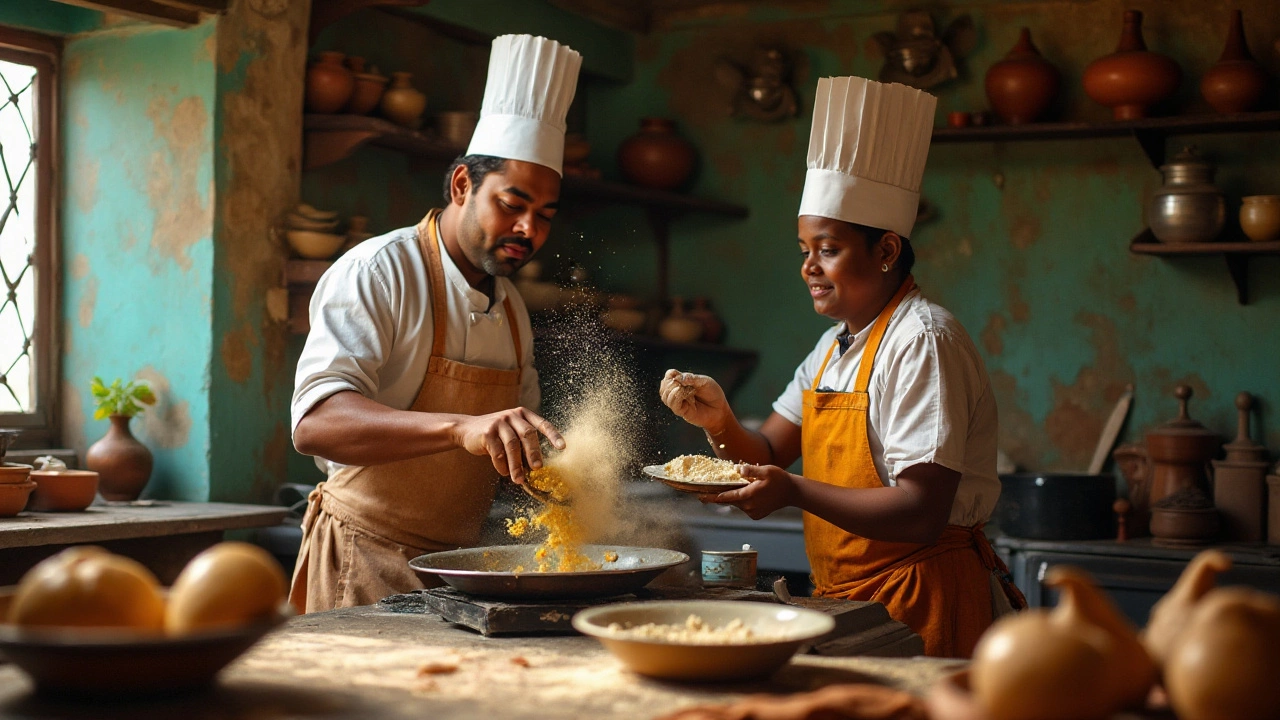
Tips for Experiencing Indian Culinary Delights
Embarking on a journey through Indian culinary landscapes is an adventure filled with vibrant flavors and aromas. Whether you're tasting the deliciousness of South Indian food or savoring the rich textures of North Indian cuisine, there are several tips to enhance your gastronomic experience. First and foremost, be prepared to embrace the diversity as each region introduces unique dishes that reflect its cultural heritage. A culinary tour of India isn't complete without sampling its street food, known for its burst of flavors served in lively marketplaces across the country. To truly understand the essence of Indian food, one must explore both humble street stalls and elegant restaurants.
Begin your exploration by engaging with local food guides or chefs who can offer a personalized insight into the dishes you taste. It's advantageous to learn a few phrases in the local language, showing respect and curiosity towards the culture. When in South India, start your day with a traditional breakfast of dosa accompanied by tangy chutneys and sambar. In North India, opt for parathas or puris with spicy accompaniments for a hearty start. These dishes serve as fantastic introductions to the respective culinary styles. For the best experience, consider participating in cooking classes, where you can learn the art of blending spices and utilizing fresh, local ingredients.
Don't shy away from experimenting with different flavors and styles, as Indian food often caters to a range of taste preferences. For those hesitant about spice levels, Indian dishes can often be tailored to suit one's palate while still delivering their signature tastes. Remember to pair your meals with traditional beverages like lassi, which can complement the savory elements beautifully. A journey through North and South India isn't limited to food alone; indulge your senses with the history behind each dish as well. As Mahatma Gandhi once profoundly said, "The essence of all religions is one. Only their approaches are different." In food lies a similar truth—the essence is shared, but the preparation and presentation are delightfully varied.
One cannot overlook the importance of hygiene and safety during their culinary tour. Prioritize establishments that maintain cleanliness and consider seeking recommendations from fellow travelers or locals. Street foods, while delectable, do require some caution; ensure the turnover rate at the stalls is high, indicating freshness. For boisterous markets, take your time perusing the stalls, allowing the colorful sights and sounds to guide your selections. Finally, partake in food festivals held across the country, such as the Goa Food and Cultural Festival or the National Street Food Festival, to experience a diverse range of Indian cuisines in one place.
To plan your culinary adventure wisely, researching seasonal specialties can enrich your experience. For instance, savor the famous mango-based dishes during peak mango season. Traveling during religious or cultural festivals offers another peek into the celebratory feasts unique to that time. Take time to explore the agricultural practices behind your dishes—many flavors can be better appreciated when you understand the journey from farm to plate. Whether dining under a canopy of stars in the vast deserts of Rajasthan or in the lush tea gardens of Kerala, the backdrop of your dining experience can accentuate the flavors on your plate profoundly.
